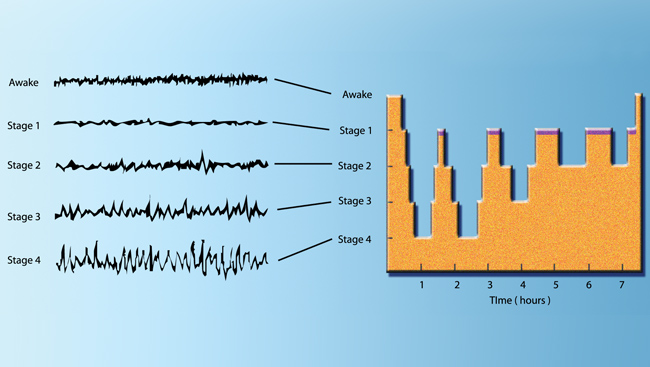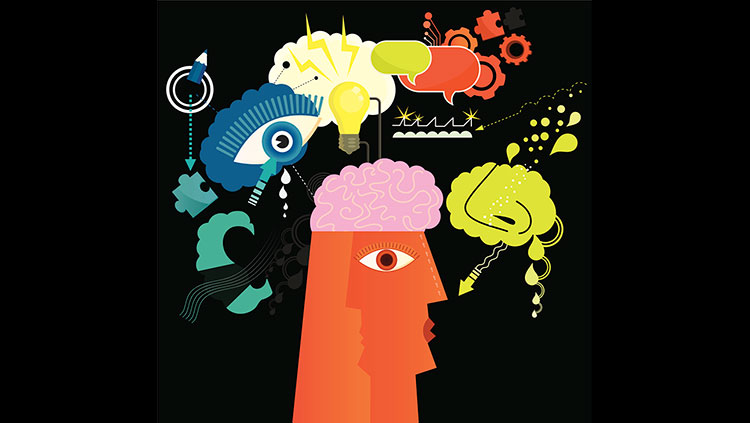Rest: The Default Mode Network
- Reviewed30 Aug 2022
- Author Melissa Galinato
- Source BrainFacts/SfN

Daydreaming. Flowing along your stream of consciousness. Envisioning yourself in your future. You’re awake, but your attention and focus are elsewhere. What is the difference between being alert and resting while awake?
During times of rest and relaxation, you’re usually avoiding heavy thinking or complicated tasks, and parts of the brain called the default mode network are more active. You may think of the default mode network as a personal lullaby or a playlist that turns on when you are ready to relax. Activity of the default mode network decreases (the lullaby gets quieter) when you start doing or thinking about a demanding task. Human studies using imaging techniques such as functional magnetic resonance imaging (fMRI) and positron emission tomography (PET) have identified which brain regions belong to the default mode network. These brain areas, which are involved in emotion, personality, introspection, and memory, include the ventromedial and dorsomedial prefrontal cortex (PFC) and anterior and posterior cingulate cortex, lateral parietal cortex, and precuneus.
Although the exact role of the default mode network is unclear, the functions of its “participating” brain regions provide hints about its purpose. Studies on emotion have revealed that activity in the ventromedial PFC is directly related to how anxious a subject feels while performing a task — suggesting that the default mode network may play a role in regulating emotion and mood. Activity in the dorsomedial PFC (a region involved in self-referential or introspective thoughts) increases when a person is at rest and daydreaming. The dorsomedial PFC is also involved in stream-of-consciousness thoughts and thoughts about oneself in the past, present, or future (autobiographical self). The roles of these regions suggest that the default mode network may also function in self-reflection and our sense of self in time.
The posterior brain regions of the default mode network (posterior cingulate cortex, lateral parietal cortex, and precuneus) become more active when remembering concrete memories from past experiences. These brain regions are connected with the hippocampus, which is important for learning and forming memories. Both the hippocampus and the default mode network are more active when a person is at rest in the evening and less active when waking up early in the day. These patterns indicate that the default mode network helps to process and remember the events of the day.
Future studies using electrical recordings from inside the human brain can be paired with fMRI to tell us more about the brain activity patterns of the default mode network and how brain regions coordinate their activity during tasks that utilize the functions of this network.
Adapted from the 8th edition of Brain Facts by Melissa Galinato.
CONTENT PROVIDED BY
BrainFacts/SfN
References
Gusnard, D. A., Akbudak, E., Shulman, G. L., & Raichle, M. E. (2001). Medial prefrontal cortex and self-referential mental activity: relation to a default mode of brain function. Proceedings of the National Academy of Sciences, 98(7), 4259-4264. http://www.pnas.org/content/98/7/4259.full.pdfMedial
Raichle, M. E. (2015). The brain's default mode network. Annual review of neuroscience, 38, 433-447. http://annualreviews.org/doi/abs/10.1146/annurev-neuro-071013-014030



















